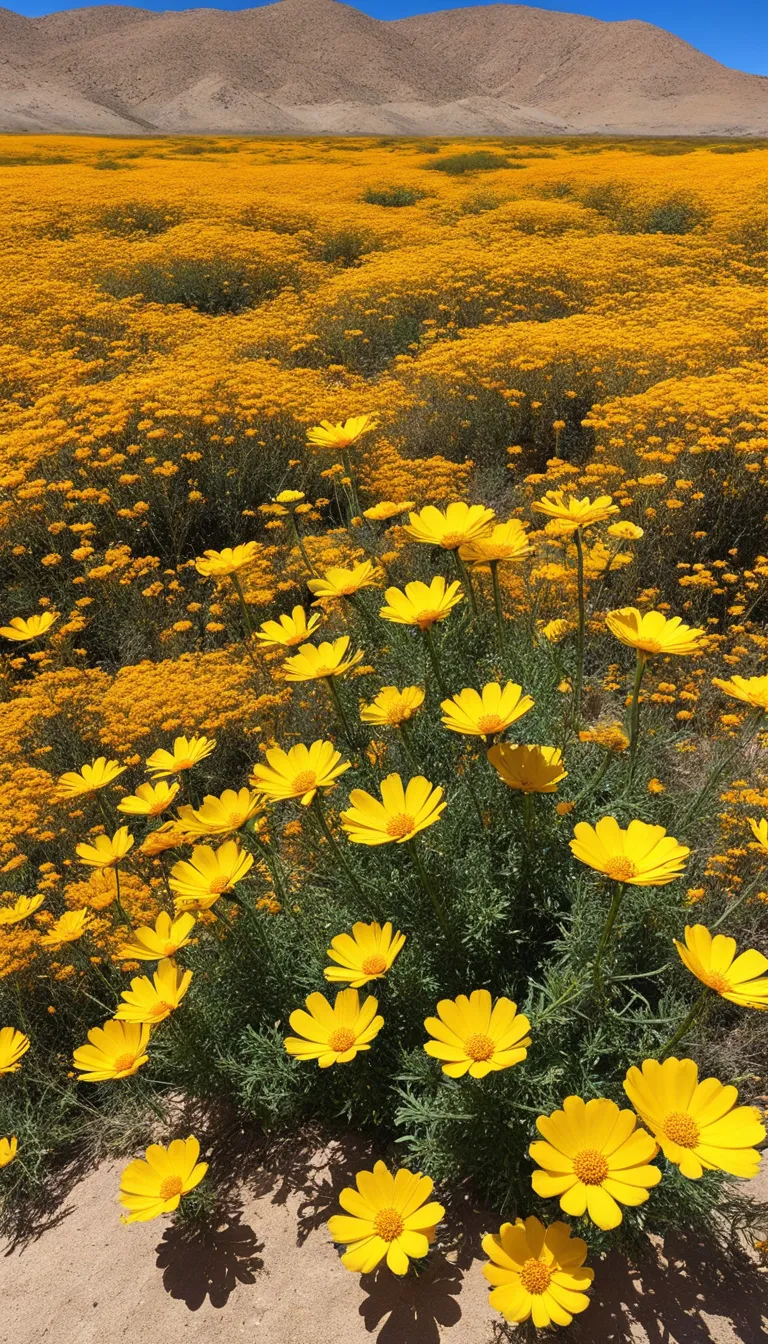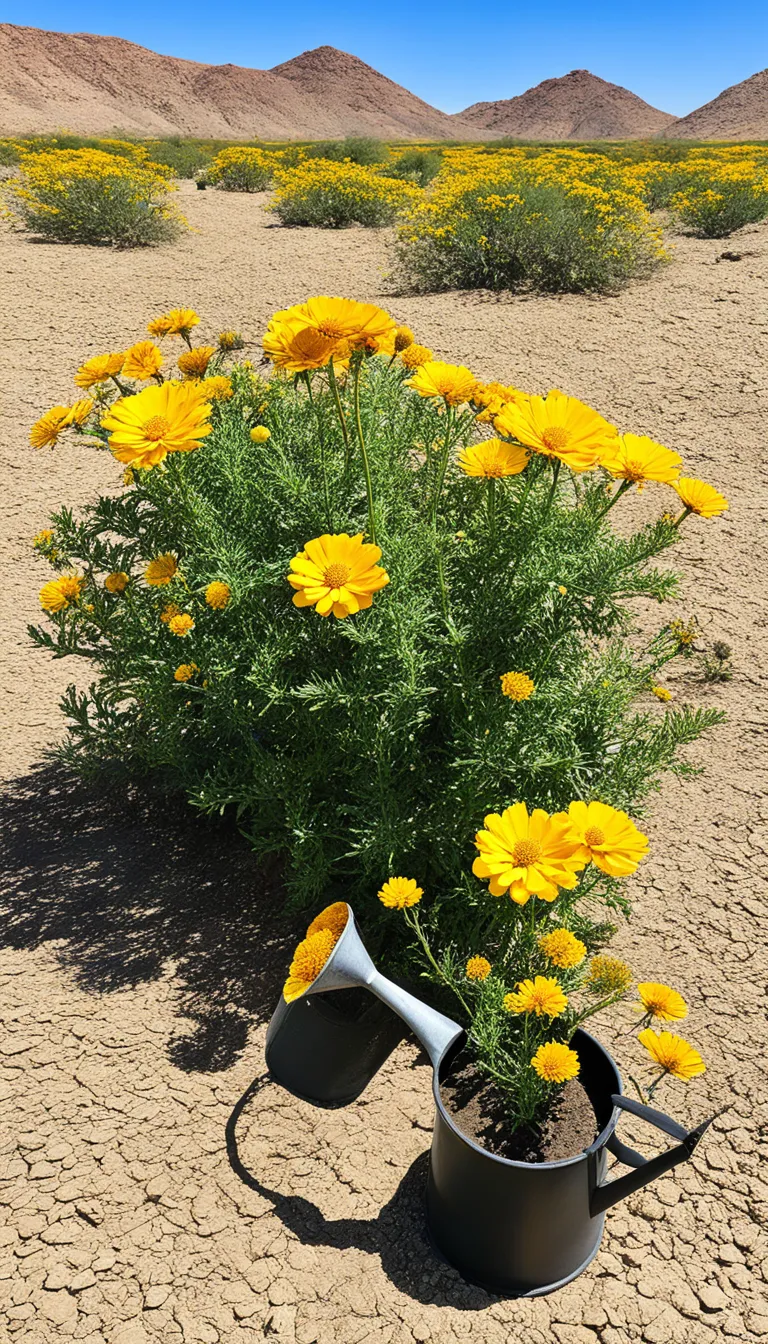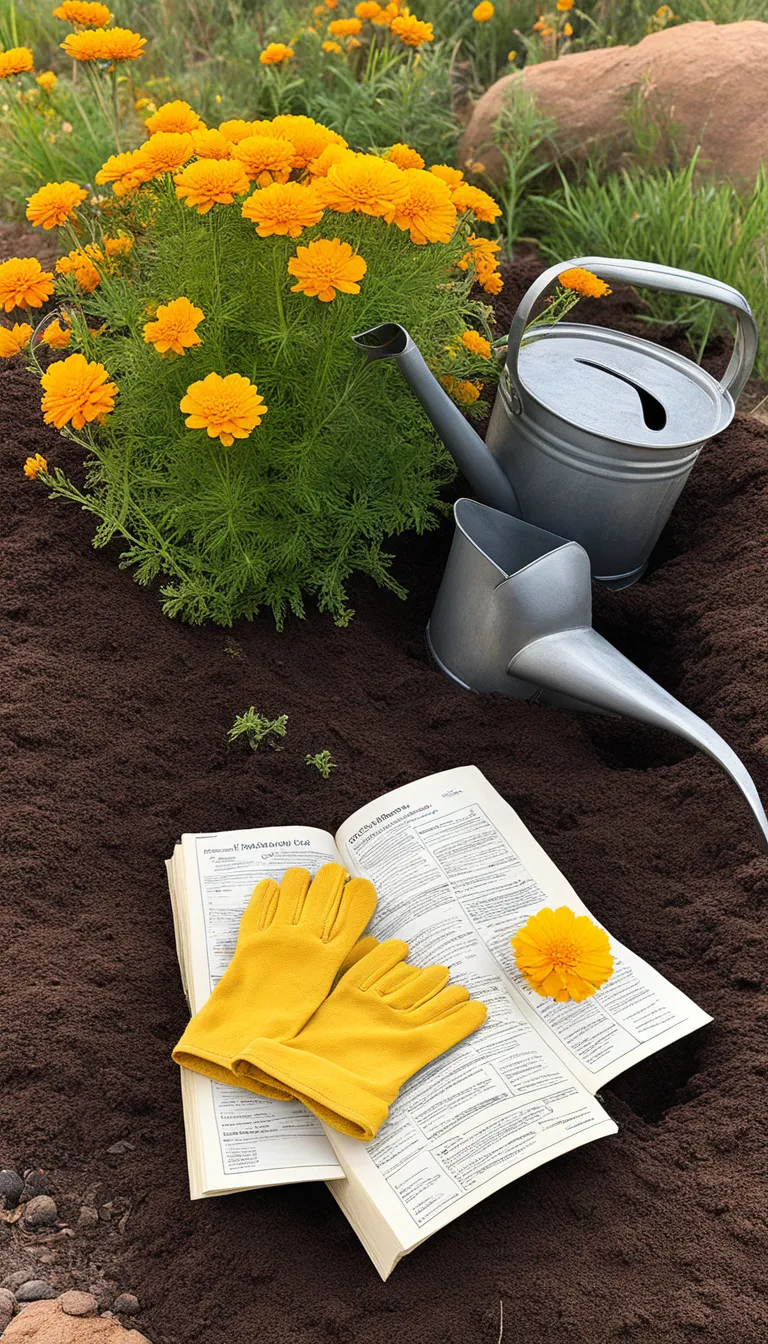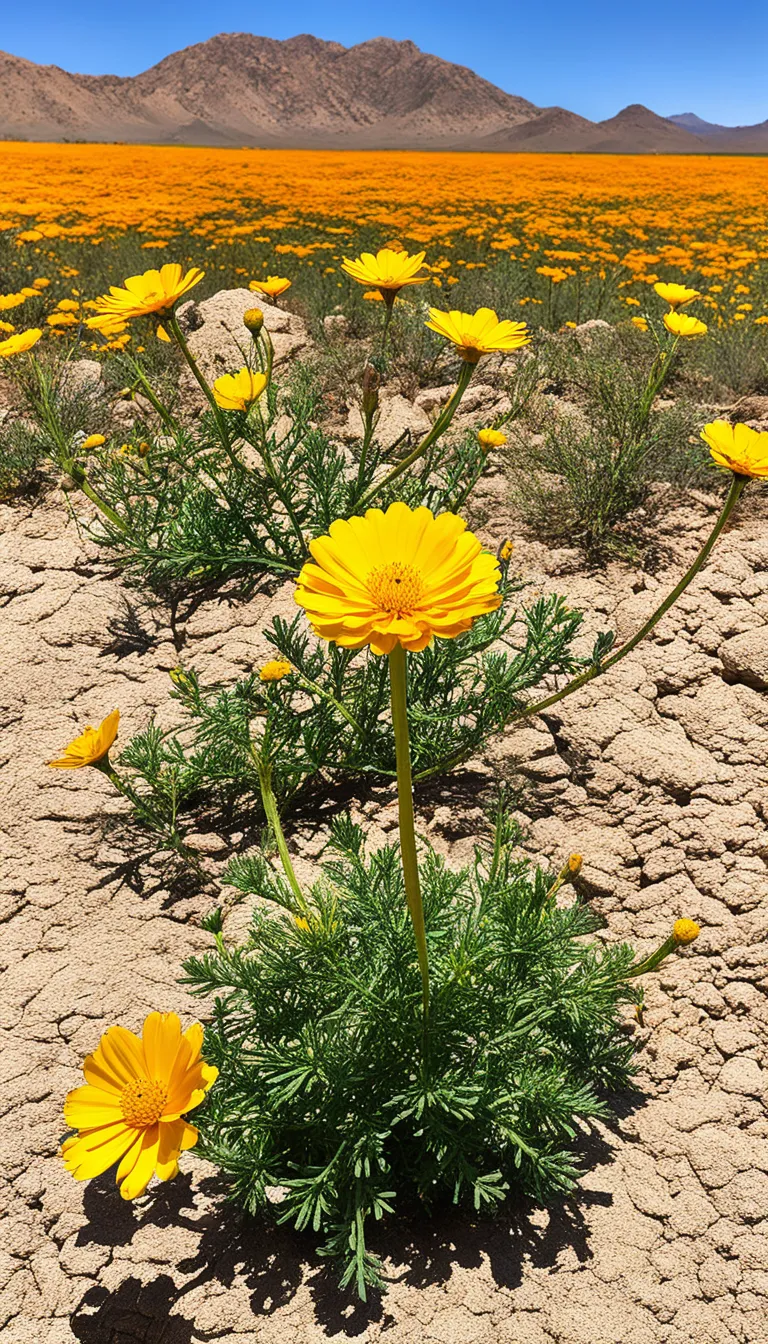Desert Marigold, a beacon of vibrancy, is the floral equivalent of a sudden, joyful explosion in the monochrome desert landscape. This dazzling flower, known scientifically as Baileya multiradiata, is not just a pretty face; it’s a symbol of resilience and survival against all odds. Imagine a splash of bright yellow amidst a sea of sand and rock – that’s the desert marigold for you, a surprise of nature that thrives where few dare to grow.
Now, you might wonder, “What makes the desert marigold so special?” Well, let me tell you, it’s not just its sun-kissed petals that catch the eye. This hardy perennial is a master of conservation, requiring minimal water to sustain its luminous blooms. It’s a favorite among gardeners looking to add a touch of the wild to their xeric landscapes, and it’s no wonder why – the desert marigold is as low-maintenance as it is beautiful.
If you’re itching to bring this golden wonder into your own space, you’re in luck! The desert marigold is as easy to plant as it is to adore. With a few simple steps, you can transform your garden into a desert oasis, brimming with the warm glow of these hardy blooms. So, are you ready to embrace the beauty of the desert marigold? Keep reading to find out how!

What is Desert Marigold?
The Desert Marigold (Baileya multiradiata) is a vibrant beacon of color in the stark desert landscape. This perennial plant is native to the southwestern United States and northwestern Mexico, flourishing in an environment where many other plants struggle to survive. Its ability to thrive in dry, rocky soils and withstand full exposure to the blazing sun makes it a symbol of resilience and beauty.
With its silvery-green foliage and golden-yellow flowers, the desert marigold is a favorite among gardeners looking to add a splash of color to their xeric landscapes. The flowers bloom from early spring to late fall, peaking in the spring, which can create a stunning visual effect akin to a sudden explosion of sunshine amidst the arid surroundings. These blooms are not only a sight to behold but are also attractive to pollinators such as butterflies and bees.
Desert marigolds are often found in open plains, mesas, and slopes, demonstrating their adaptability to various desert terrains. Here’s a quick look at some of its key characteristics:
- Height: Typically grows 12 to 18 inches tall.
- Spread: Can spread up to 24 inches wide.
- Flowers: Daisy-like with numerous yellow rays and a central disc.
- Blooming Season: Spring to fall, with the heaviest bloom in spring.
- Leaves: Grayish-green, hairy, and often pinnately lobed or divided.
Not only does the desert marigold offer aesthetic appeal, but it’s also a plant that requires minimal care, making it a perfect choice for gardeners who appreciate low-maintenance plants that deliver high-impact visuals. So, are you ready to bring a piece of the desert’s surprise and splendor into your own garden?

How to Care for Desert Marigold?
Caring for desert marigolds is a rewarding experience, as these stunning blooms can add a touch of surprise and explosion to any arid landscape. They are not only beautiful but also hardy and able to withstand tough conditions. However, to ensure your desert marigolds thrive, there are a few key tips you should follow:
- Watering: Although desert marigolds are drought-tolerant, they do need some water to survive, especially during the hot summer months. The key is to water them deeply but infrequently, allowing the soil to dry out between watering sessions. This mimics their natural desert environment and promotes healthy growth.
- Soil: These flowers prefer well-draining soil, as standing water can lead to root rot. If you’re planting desert marigolds in a garden bed, consider amending the soil with sand or gravel to improve drainage. A cactus or succulent potting mix also works well for container planting.
- Sunlight: Full sun is the name of the game for desert marigolds. They thrive in bright, direct light, so choose a spot in your garden that receives plenty of sunshine throughout the day.
- Fertilization: Less is more when it comes to fertilizing desert marigolds. They are adapted to nutrient-poor soils, so over-fertilizing can do more harm than good. If you do decide to fertilize, opt for a low-nitrogen option and apply sparingly.
- Pruning: Deadheading, or removing spent flowers, can encourage more blooms and extend the flowering season. Additionally, trimming back any leggy growth in the late summer can help maintain a compact and attractive shape.
By following these simple care instructions, your desert marigolds will be a bold and resilient addition to your garden, capable of withstanding the extremes of their environment while providing breathtaking beauty.

Planting Desert Marigold
is akin to setting off a firework in your garden – a burst of color that thrives with minimal fuss. But how do you ensure that this explosion of yellow blooms year after year? Let’s walk through the steps to plant your desert marigolds and create a stunning display that mirrors the surprise and vitality of nature’s resilience.
First things first, choose a spot that gets plenty of sunshine. Desert marigolds are sun worshippers and require full exposure to truly flourish. Next, you’ll want to ensure your soil is well-draining; these flowers are not fans of “wet feet.” If you’re working with heavy or clay soil, consider amending it with sand or gravel to improve drainage.
When it’s time to plant, follow these simple steps:
- Timing: Plant in early spring or fall when temperatures are milder.
- Spacing: Give each plant about 15-18 inches of space to allow for growth and air circulation.
- Depth: Sow seeds or plant seedlings just below the surface, no more than an inch deep.
- Watering: After planting, give your marigolds a good drink of water. Then, be modest with watering; these drought-tolerant plants require little once established.
Remember, planting desert marigold is not just about sticking a plant in the ground; it’s about creating a micro-habitat that echoes the rugged beauty of their natural desert environment. With the right care, your desert marigolds will not only survive but thrive, bringing a shock of joy to your garden with their vibrant, long-lasting blooms.





